

 Should we lament that the taste of wines have changed?
Should we lament that the taste of wines have changed?
That the wines we are accustomed to drinking will eventually change is probably inevitable in the wake of climate change. Some regions may need to change the grape variety, the heat may cause the acidity to drop, etc. This is especially a problem for the winegrowers who may be facing more unpredictable weather.
But for the wine consumers? Is it a problem for us that the taste of the wines we drink changes?
Hardly. Although sometimes media likes to put it that way.
Because haven’t the taste of wine developed and changed ever since man began to make wine?
How did the wines taste before phylloxera hit during the second half of the 19th century? Nobody knows today. Although some (no names, but I think especially of a certain wine grower in Graves) think they know and say that they have found the original Bordeaux flavour by using un-grafted vines.
If you are looking for the “original taste”, how far back must you go? How long have the wines we are drinking today tasted like this?
Those who started drinking wine in the 1970s and 1980s know that there has been a tremendous change in quality and variety since then. And thus, also of taste and character. We drink totally different wines today. Even the wines that come from the same regions that we drank at the time taste quite different today.
In fact, wine consumers easily accept new tastes. Remember when the New World wines emerged in the 1990s. People quickly became accustomed to (and liked) the more powerful and alcohol-richer warm-climate wines.
The alcohol level affects taste and structure. That the level is higher today probably has something to do with global warming. But it probably has more to do with better technology and techniques in the vineyard and in the cellar and with the fact that we drink more wines from warmer regions today. Not only wines from the New World but also from e.g. southern Italy and southern France, wines that were not widely exported before.
By and large, most consumers like a good dose of alcohol and rich wines. Otherwise, we would not have this explosion of appassimento wines (this is true especially for Scandinavia) or the (in)famous “New World” style. In wine tastings, powerful wines almost always win over light and elegant wines.
But the alcohol is now back on the agenda. It is too high according to some consumers. And media. The trend right now is towards low-alcohol wines.
But think about it, does it really make any significant difference, 12.5% or 14.5%? Lower than 12.5% is unusual. 14.5% is something we often hear people worry about. “You get too much alcohol.” But the difference in alcohol intake is minimal. If you share a bottle of 12.5% wine on two, i.e. drink 37.5 cl, the difference is only a small extra splash of wine, 6 cl, and then you have reached the same alcohol intake as if you were drinking wine of 14.5%. So, the lower alcohol contents are “compensated” quickly by taking an extra sip of the slightly lighter low-alcohol wine.
But now, when there is actually a real interest from consumers for wines with lower alcohol, and researchers are working hard to find the best solutions to lower the alcohol levels, isn’t it bizarre that chaptalization of the must is allowed in Europe? Yes, throughout Europe, not just the northern part, although there are some local restrictions. And chaptalization, or “enrichment” as it is also called, has no function other than raising the alcohol level.
By now the autumn’s busiest travel season has come to an end.
September and October have been filled with activities. We have organised and guided more than fifteen wine tours during these two hectic harvest months, to France, Italy, Spain and Portugal.
So now it’s time to think ahead.
There is still a chance to join two of this winter’s long-distance tours: to beautiful and exciting South Africa in February and to New Zealand in March. New Zealand is so much more than just sauvignon blanc. It is also a very special country, including where the modern bungee jumping was invented. Book your winter wine tour now!
It is also high time to think about a wine tour next spring and autumn. See more details below.
If you are going on a wine tour, why not choose to travel with the wine experts and wine tour specialist? To be sure to get the best experience in the wine region!
Enjoy the Brief!
Britt & Per
PS: Recommend to your friends to read the Brief !
– – – – –
What’s on at BKWine Tours
2020
- Chile and Argentina, January 20 – February 2, 2020
- South Africa, February 15-23, 2020
- New Zealand, March 9-24, 2020
- Bordeaux, April 15-19, 2020
- Champagne, September 16-20, 2020
- Bordeaux, September 30 – October 4, 2020
For more information please contact us on email or on phone (we’re on French time), or go to our wine travel site on www.bkwinetours.com!
We also make custom designed wine tours – on-demand tours for you and a group of friends, for your company (maybe to scout new winegrowers?), for a special event… We can combine winery visits and wine touring with other activities: gastronomic workshops, visit to an oyster farm, truffles hunting, cheese making, and more. More info on the custom designed and bespoke BKWine wine tours and travel here!
Read our book(s)
We have written several wine books, nine at the last count. One of them has been translated to English; the others are (so far) only available in Swedish. This is the one that is available in English: Biodynamic, Organic and Natural Winemaking, Sustainable Viticulture and Viniculture
All our books are on wine, but on different subjects: wines of the Languedoc, wine growing and wine making, the wines of France, Tuscany, Bordeaux, Piedmont, Burgundy, Champagne. Several have won prestigeous prizes and awards. Read more on our wine books.
From the World of Wine
In Brief
In short, news and stuff from the world of wine.
Burgundy grand cru: small volume, high prices
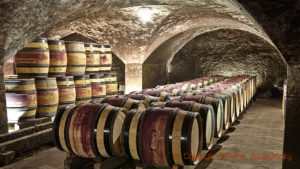 The wine world is really not a stronghold of equality. The average export price of a grand cru (red & white) from Burgundy in 2018 was 87 euros per bottle. The red ones are more prestigious and averaged 101 euros per bottle. The whites were “only” at 56 euros. These are prices that most other wines can only dream of. Prices of Burgundy grand cru have risen steadily since 2014. 2 million bottles are made every year and 96% of these are exported. Is this a sign that other countries are more focussed on prestigious names than France when it comes to wine? The Burgundy grand crus generate a turnover of 176 million euros, which is 20% of the total value of Burgundy’s wine exports. But only 2.5% of the volume. Fortunately for us normal consumers, there are more affordable Burgundy wines out there. Read more
The wine world is really not a stronghold of equality. The average export price of a grand cru (red & white) from Burgundy in 2018 was 87 euros per bottle. The red ones are more prestigious and averaged 101 euros per bottle. The whites were “only” at 56 euros. These are prices that most other wines can only dream of. Prices of Burgundy grand cru have risen steadily since 2014. 2 million bottles are made every year and 96% of these are exported. Is this a sign that other countries are more focussed on prestigious names than France when it comes to wine? The Burgundy grand crus generate a turnover of 176 million euros, which is 20% of the total value of Burgundy’s wine exports. But only 2.5% of the volume. Fortunately for us normal consumers, there are more affordable Burgundy wines out there. Read more
Vinomed, new wine fair in Montpellier 27-28 April 2020
 Vinomed is the name of a new, export-oriented wine fair in Montpellier in southern France. It takes place for the first time this year for two days, April 27 and 28, 2020. The focus of Vinomed is the wines from the Languedoc-Roussillon even if the show also includes some other regions in “Occitanie”, like e.g. the Sud-Ouest. This wine region, France’s largest, deserves its own wine fair, says the three founders of Vinomed. We heartily agree. With Vinomed, the founders hope to fill the void left by Vinisud when it moved from Montpellier to Paris in 2018 and became a part of the bigger Wine Paris now also merged with Vinexpo. Vinomed will have much more southern producers and smaller wineries than the big fair. The “predecessor”, Vinisud, was perhaps the best wine fair we know, so if Vinomed will be similar it is definitely worth visiting. More info: salon-vinomed
Vinomed is the name of a new, export-oriented wine fair in Montpellier in southern France. It takes place for the first time this year for two days, April 27 and 28, 2020. The focus of Vinomed is the wines from the Languedoc-Roussillon even if the show also includes some other regions in “Occitanie”, like e.g. the Sud-Ouest. This wine region, France’s largest, deserves its own wine fair, says the three founders of Vinomed. We heartily agree. With Vinomed, the founders hope to fill the void left by Vinisud when it moved from Montpellier to Paris in 2018 and became a part of the bigger Wine Paris now also merged with Vinexpo. Vinomed will have much more southern producers and smaller wineries than the big fair. The “predecessor”, Vinisud, was perhaps the best wine fair we know, so if Vinomed will be similar it is definitely worth visiting. More info: salon-vinomed
New New Zealand research gives lower alcohol sauvignon blanc wines
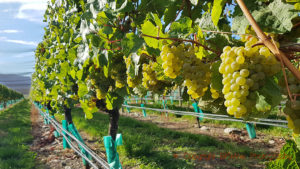 Is the new trend low-alcohol wines? This is what many producers believe in New Zealand. And a great deal of effort is now made to produce sauvignon blanc wines with alcohol contents of around 10%. Concours Mondial du Sauvignon (which is organised by the big Concours Mondial de Bruxelles) reports on the latest research. The good thing with this project is that they make the low alcohol wines in a completely natural way, i.e. without dealcoholizing the wines. With canopy management, finding the right locations to plant the vines and using special yeast strains, they can ensure that the finished wines, although completely dry, have alcohol contents of only between 9 and 10%. The quality must not suffer. The consumer must still feel that they are drinking a sauvignon blanc from Marlborough.
Is the new trend low-alcohol wines? This is what many producers believe in New Zealand. And a great deal of effort is now made to produce sauvignon blanc wines with alcohol contents of around 10%. Concours Mondial du Sauvignon (which is organised by the big Concours Mondial de Bruxelles) reports on the latest research. The good thing with this project is that they make the low alcohol wines in a completely natural way, i.e. without dealcoholizing the wines. With canopy management, finding the right locations to plant the vines and using special yeast strains, they can ensure that the finished wines, although completely dry, have alcohol contents of only between 9 and 10%. The quality must not suffer. The consumer must still feel that they are drinking a sauvignon blanc from Marlborough.
Researchers have now discovered that the degree of sugar accumulation in the grapes can be adjusted by removing leaves from the vines at specific times. And this without affecting the taste or the phenolic maturity. This is very interesting indeed. It should be useful research also for other regions. Read more cmsauvignon
Travel: Go on a wine tour to New Zealand.
USA is the biggest importer of French oak barrels but the Chinese imports are growing fast
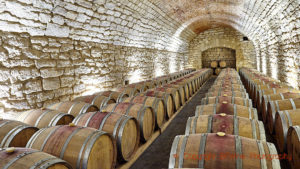 Only 2% of the world’s wines are aged in oak barrels. (Ed.: Only?) But for these 2% quite a few barrels are needed. France produced 670,000 barrels in 2018, an increase of 2%. 68% of the barrels went on export. The rest stayed in the French wine regions where demand is increasing, in part due to the fact that cognac is currently doing so well.
Only 2% of the world’s wines are aged in oak barrels. (Ed.: Only?) But for these 2% quite a few barrels are needed. France produced 670,000 barrels in 2018, an increase of 2%. 68% of the barrels went on export. The rest stayed in the French wine regions where demand is increasing, in part due to the fact that cognac is currently doing so well.
The United States is the largest buyer with 29% of the volume and 31% of the value. Spain is second with 7% and 6% respectively. Australia and Italy share third place with 6% each in volume and value. China has significantly increased its imports of French oak barrels. Exports to China rose in 2018 by 20% in volume and 26% in value. It is also interesting to note that more and more large oak vessels are sold, so-called foudres. Read more tonneliersdefrance
Oregano protects against fungal diseases in the vineyard
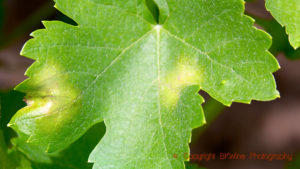 Can the solution to the problem of the dreaded fungal disease downy mildew (mildiou) be something as simple as oregano? It is a little early to answer yes to that question. But the experiments that two Swiss researchers are currently doing are interesting. They discovered that by spraying essential oil of oregano on chasselas grapes inoculated with downy mildew, an outbreak of the disease was prevented because the vine’s immune system had been activated. There are still many issues to be solved regarding the usefulness of spraying with oregano. The photosynthesis may be affected by prolonged spraying. And not least, will the grapes absorb the taste of oregano? However, the researchers are cautiously optimistic and believe that even if their discovery cannot protect the vines totally, it can help reduce the use of synthetic fungicides. And for organic growers, it could reduce the use of copper. Read more: vitisphere
Can the solution to the problem of the dreaded fungal disease downy mildew (mildiou) be something as simple as oregano? It is a little early to answer yes to that question. But the experiments that two Swiss researchers are currently doing are interesting. They discovered that by spraying essential oil of oregano on chasselas grapes inoculated with downy mildew, an outbreak of the disease was prevented because the vine’s immune system had been activated. There are still many issues to be solved regarding the usefulness of spraying with oregano. The photosynthesis may be affected by prolonged spraying. And not least, will the grapes absorb the taste of oregano? However, the researchers are cautiously optimistic and believe that even if their discovery cannot protect the vines totally, it can help reduce the use of synthetic fungicides. And for organic growers, it could reduce the use of copper. Read more: vitisphere
Read: Read the book that tells you the truth about organic wines.
Quinta do Poeira, a high-quality producer of dry wines in the Douro Valley
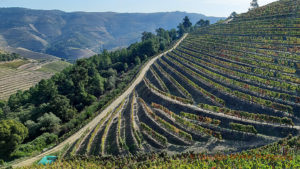 In October we have twice been in the Douro Valley. In this wonderfully beautiful region in northern Portugal, some of Portugal’s, even the world’s, most interesting wines are made. That they make both dry wines and port wines here makes a visit to the Douro even more exciting. The producers are very fond and proud of their ports. But it is a long process to make a high-quality port. The dry wines (“table wines”) can be released on the market faster. And besides, there are locations and microclimates in the valley that are better suited to dry wines than to port.
In October we have twice been in the Douro Valley. In this wonderfully beautiful region in northern Portugal, some of Portugal’s, even the world’s, most interesting wines are made. That they make both dry wines and port wines here makes a visit to the Douro even more exciting. The producers are very fond and proud of their ports. But it is a long process to make a high-quality port. The dry wines (“table wines”) can be released on the market faster. And besides, there are locations and microclimates in the valley that are better suited to dry wines than to port.
On one of our trips, we visited a small producer called Quinta do Poeira. The winemaker is the talented Jorge Moreira. It was something of an adventure to get there (this is often the case in the Douro Valley) but it was well worth it. Poeira focuses on very high-quality dry wines, red and white. Look for the beautiful and very fresh red Poeira (~30 euros) made from old vines grown on a north-facing vineyard. The grapes are foot trodden in the traditional Portuguese way and aged for 16 months in small French oak barrels. Worth looking for also, Pó de Poeira(~20 euros) from younger grapes, and the two whites, Poeira Branco and Pó de Poeira Branco, both made from alvarinho.
Ribera del Duero, no longer just red wine, also white
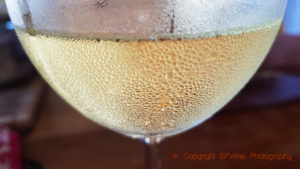 Now, wine producers in the Spanish region of Ribera del Duero can make white wine and call it DO Ribera del Duero. So far, this designation has been for red wines only. The whites account for around 3% of the production in the region and have until now been sold as Castilla y Leon IGP. Now that they can be sold as Ribera del Duero, maybe we will see more of them.
Now, wine producers in the Spanish region of Ribera del Duero can make white wine and call it DO Ribera del Duero. So far, this designation has been for red wines only. The whites account for around 3% of the production in the region and have until now been sold as Castilla y Leon IGP. Now that they can be sold as Ribera del Duero, maybe we will see more of them.
The main grape of the white Ribera wines will be albillo mayor, already the most planted white variety in the region. Albillo mayor must be included to at least 75%. It is a grape that apparently is not so easy to work with, but which produces excellent wines. It can be blended with a variety of other grapes, such as malvaisa, viura, verdejo, albariño, palomino, chardonnay, riesling, sauvignon blanc, treixadura, viognier and a few more. Read more: thedrinksbusiness
Features
Features that we have published during the past month, with lots of reading for you.
Valtellina – in the shadow of Piedmont, the sun is shining
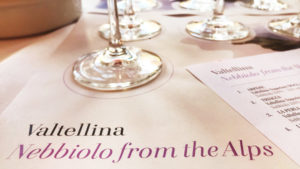 “I ask my friends about Valtellina. Most shake their heads; some say northern Italy but few make the connection to Lombardy. The talented and well-read smiles and ticks off nebbiolo combined with a comparison to Piedmont. An underdog with serious tannins and an obvious attractiveness to the wine nerds. Filled to the last place, the seminar with Madeleine Stenwreth MW and 17 wine producers.”
“I ask my friends about Valtellina. Most shake their heads; some say northern Italy but few make the connection to Lombardy. The talented and well-read smiles and ticks off nebbiolo combined with a comparison to Piedmont. An underdog with serious tannins and an obvious attractiveness to the wine nerds. Filled to the last place, the seminar with Madeleine Stenwreth MW and 17 wine producers.”
Read more in Sven-Olof Johansson’s article on BKWine Magazine: Valtellina – in the shadow of Piedmont, the sun is shining.
How German wines will conquer Scandinavia, Mundus Vini Nordic
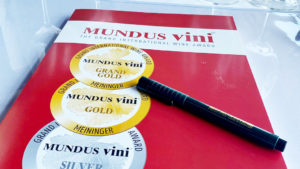 “Mundus Vini is one of the world’s most influential wine competitions. It has been running for 18 years and every year around 11,000 different wines participate in the competition. It must be acknowledged that I have always been a bit sceptical of bottles adorned with gold and silver medals, but after sitting in the jury as a judge during two intense days in June, I am prepared to rethink my opinion. Now I know how much work is behind the medals and that only really good wines are rewarded.”
“Mundus Vini is one of the world’s most influential wine competitions. It has been running for 18 years and every year around 11,000 different wines participate in the competition. It must be acknowledged that I have always been a bit sceptical of bottles adorned with gold and silver medals, but after sitting in the jury as a judge during two intense days in June, I am prepared to rethink my opinion. Now I know how much work is behind the medals and that only really good wines are rewarded.”
Read more in Carl-Magnus Hedin’s article on BKWine Magazine: How German wines will conquer Scandinavia, Mundus Vini Nordic.
Moldova’s emerging small, high-quality wine producers
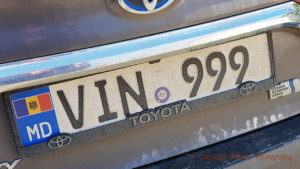 Look beyond the big names and discover the new-wave wineries. In recent years a number of small, very quality-minded, wine producers have emerged in Moldova. Some of them started out making wines in their homes, just for their own consumption. Others worked in bigger wineries and decided to try their luck and start out on their own. Some are very new but promising. Some have already gained an international reputation. Small Moldovan wine producers to watch for: Gogu Winery, Atu Urban Winery, Sava, Et Cetera, Equinox, Carpe Diem, Novak Winery, Minis Terrios, Vinaria Pripa, Pelican Negru.
Look beyond the big names and discover the new-wave wineries. In recent years a number of small, very quality-minded, wine producers have emerged in Moldova. Some of them started out making wines in their homes, just for their own consumption. Others worked in bigger wineries and decided to try their luck and start out on their own. Some are very new but promising. Some have already gained an international reputation. Small Moldovan wine producers to watch for: Gogu Winery, Atu Urban Winery, Sava, Et Cetera, Equinox, Carpe Diem, Novak Winery, Minis Terrios, Vinaria Pripa, Pelican Negru.
Read more in Britt’s article on BKWine Magazine: Moldova’s emerging small, high-quality wine producers.
Chablis 2017 from La Chablisienne
 The people’s choice and the rewards for the patient. The glasses are close to each other. Not literally in their arrangement on the table, but in style, appearance, viscosity and overall impression. The lowest level is not unexpectedly high, but the fine wines from the slopes north of Chablis have not yet been had the time to develop their broad register. 2017 is young, ready to drink in its simplest form but only a child when it comes to the premier crus and grand crus. With the exception of some specific regions, wines are sold almost exclusively when young. With good reason in some cases and one has, of course, full understanding of that the grower wants to get his money. Moreover, many growers do not have space to stock the volumes of wines from whole vintages in their cellars. The price for us consumers is that many bottles are drunk long before they reach their full potential.
The people’s choice and the rewards for the patient. The glasses are close to each other. Not literally in their arrangement on the table, but in style, appearance, viscosity and overall impression. The lowest level is not unexpectedly high, but the fine wines from the slopes north of Chablis have not yet been had the time to develop their broad register. 2017 is young, ready to drink in its simplest form but only a child when it comes to the premier crus and grand crus. With the exception of some specific regions, wines are sold almost exclusively when young. With good reason in some cases and one has, of course, full understanding of that the grower wants to get his money. Moreover, many growers do not have space to stock the volumes of wines from whole vintages in their cellars. The price for us consumers is that many bottles are drunk long before they reach their full potential.
Read more in Sven-Olof Johansson’s article on BKWine Magazine: Chablis 2017 from La Chablisienne.
Tasca d´Almeritas Tenuta Tascante in Sicily makes wines with elegance and style on Etna
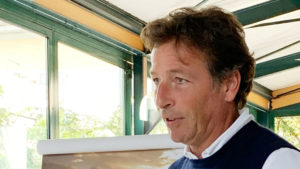 The historic estate Tasca d ‘Almerita’s new project at Etna, Tenuta Tascante (read it backwards), is a tribute to finesse and elegance. This new project is on the slopes of Etna. Come with us and discover one of Sicily’s most active wine producers and their new project on the Sicilian volcano. “The challenge is to make wines with elegant tannins but at the same time make wines that can be aged for a long time,” says Alberto Tasca d ‘Almerita in answer to the question which the biggest challenge is in working on Etna.
The historic estate Tasca d ‘Almerita’s new project at Etna, Tenuta Tascante (read it backwards), is a tribute to finesse and elegance. This new project is on the slopes of Etna. Come with us and discover one of Sicily’s most active wine producers and their new project on the Sicilian volcano. “The challenge is to make wines with elegant tannins but at the same time make wines that can be aged for a long time,” says Alberto Tasca d ‘Almerita in answer to the question which the biggest challenge is in working on Etna.
Read more in Asa Johansson’s article on BKWine Magazine: Tasca d´Almeritas Tenuta Tascante in Sicily makes wines with elegance and style on Etna.
Delicious wines from Handpicked Wines’ range
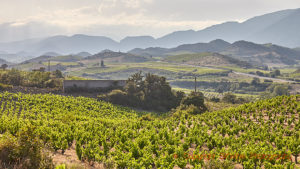 Handpicked Wines’ tasting of their range has for several years been one of the more fun events to end summer and a good start to the fall. This year the tasting was held at the company’s own premises on Bondegatan on Söder in Stockholm. Already in the courtyard, we were met with bubbles and food that could be combined when and how you wanted. Nice idea.
Handpicked Wines’ tasting of their range has for several years been one of the more fun events to end summer and a good start to the fall. This year the tasting was held at the company’s own premises on Bondegatan on Söder in Stockholm. Already in the courtyard, we were met with bubbles and food that could be combined when and how you wanted. Nice idea.
Read more on a wide range of interesting wines picked out by Carl-Erik Kanne on BKWine Magazine: Delicious wines from Handpicked Wines’ range.
Le Serre Nuove dell’ Ornellaia, the second wine, takes first place
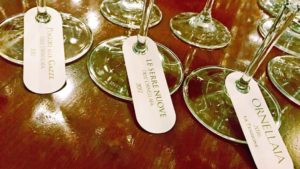 A vertical tasting from 1998 to 2017. The headline might perhaps raise a few hackles. At the top of the pyramid there is, or at least should be, indisputably the most nuances, opulence and structure, in the most expensive bottle. One can, of course, not entirely deny this although I guess many of us might be fooled in a blind tasting. But at the highest summits, the bottles also cost a lot and the question is whether it is worth selling the house, the boat and little brother to reach the most beautiful bottle. At Ornellaia, I feel extremely comfortable with Le Serre Nuove dell’ Ornellaia, their second wine with its very own distinct character.
A vertical tasting from 1998 to 2017. The headline might perhaps raise a few hackles. At the top of the pyramid there is, or at least should be, indisputably the most nuances, opulence and structure, in the most expensive bottle. One can, of course, not entirely deny this although I guess many of us might be fooled in a blind tasting. But at the highest summits, the bottles also cost a lot and the question is whether it is worth selling the house, the boat and little brother to reach the most beautiful bottle. At Ornellaia, I feel extremely comfortable with Le Serre Nuove dell’ Ornellaia, their second wine with its very own distinct character.
Read more in Sven-Olof Johansson’s article on BKWine Magazine: Le Serre Nuove dell’ Ornellaia, the second wine, takes first place.
Wine tours
Some information about current and future wine tours with BKWine.
South Africa, a changing wine country | wine tour
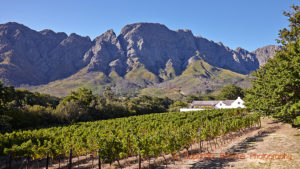 South Africa has an incredible diversity of grape varieties. There is a wide range of wine styles. The vineyard surface is around 100,000 hectares, but not all grapes become wine. The brandy production is still quite important, but it has declined in recent years. Much has changed in South Africa. During our tour, we will see that more and more wine producers are passionate about making ambitious and exciting wines. We will also get to know the South African cuisine with influences from near and afar. The spicy Cape Malay cuisine is one of our favourites. Our wine journey begins in Cape Town. From there we will visit the magnificent Cape Peninsula. One stop will, of course, be at the Cape of Good Hope. We will visit wineries in Stellenbosch and Franschhoek and also around the small town of Hermanus on the south coast, now an important place for cool-climate grapes such as sauvignon blanc and pinot noir. We will taste lots of good wines and we will meet some fascinating people. Come with us to South Africa in February.
South Africa has an incredible diversity of grape varieties. There is a wide range of wine styles. The vineyard surface is around 100,000 hectares, but not all grapes become wine. The brandy production is still quite important, but it has declined in recent years. Much has changed in South Africa. During our tour, we will see that more and more wine producers are passionate about making ambitious and exciting wines. We will also get to know the South African cuisine with influences from near and afar. The spicy Cape Malay cuisine is one of our favourites. Our wine journey begins in Cape Town. From there we will visit the magnificent Cape Peninsula. One stop will, of course, be at the Cape of Good Hope. We will visit wineries in Stellenbosch and Franschhoek and also around the small town of Hermanus on the south coast, now an important place for cool-climate grapes such as sauvignon blanc and pinot noir. We will taste lots of good wines and we will meet some fascinating people. Come with us to South Africa in February.
South Africa, February 15-23, 2020. Book your wine tour to South Africa now!
New Zealand, a very different New World country | wine tour
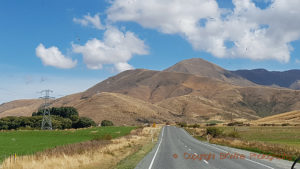 New Zealand is a different New World country. It is cooler and very often the wines feel European in style. They are fresh and elegant, both the whites and the red wines. Sauvignon blanc is the most important grape. It often has a very aromatic style in New Zealand, with floral and citrus notes. But there are many different styles of sauvignon blanc and there are also many more grape varieties than you may think. We will discover pinot noir, cabernet sauvignon, riesling, syrah and several other grape varieties, in addition to sauvignon blanc. Our tour of this fascinating wine country will take us to almost all wine regions and we will taste a variety of wine styles. Our comfortable bus will take us from Auckland on the North Island down to Queenstown on the South Island. We will see a large part of the country with many unique experiences, not only wine. We make about 20 different wine visits. You will bring back home a lot of memories.
New Zealand is a different New World country. It is cooler and very often the wines feel European in style. They are fresh and elegant, both the whites and the red wines. Sauvignon blanc is the most important grape. It often has a very aromatic style in New Zealand, with floral and citrus notes. But there are many different styles of sauvignon blanc and there are also many more grape varieties than you may think. We will discover pinot noir, cabernet sauvignon, riesling, syrah and several other grape varieties, in addition to sauvignon blanc. Our tour of this fascinating wine country will take us to almost all wine regions and we will taste a variety of wine styles. Our comfortable bus will take us from Auckland on the North Island down to Queenstown on the South Island. We will see a large part of the country with many unique experiences, not only wine. We make about 20 different wine visits. You will bring back home a lot of memories.
New Zealand, March 9-24, 2020. Book your wine tour to New Zealand now!
Bordeaux, grand chateaux and prestigious wines | wine tour
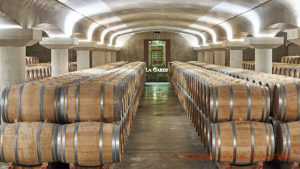 Going to Bordeaux at least once is a must for any wine lover. Bordeaux has had such an impact on almost all other wine regions in the world, that you really must see it, and maybe figure out why Bordeaux is so important. We will see and visit some really magnificent chateaux and have plenty of tastings with very prestigious wines. Our lunches at the chateaux are of star quality, amazing gastronomy. In the evenings you will enjoy the beautiful city of Bordeaux, the most elegant city in France. Bordeaux is not only worth going to, it is a must for a wine lover.
Going to Bordeaux at least once is a must for any wine lover. Bordeaux has had such an impact on almost all other wine regions in the world, that you really must see it, and maybe figure out why Bordeaux is so important. We will see and visit some really magnificent chateaux and have plenty of tastings with very prestigious wines. Our lunches at the chateaux are of star quality, amazing gastronomy. In the evenings you will enjoy the beautiful city of Bordeaux, the most elegant city in France. Bordeaux is not only worth going to, it is a must for a wine lover.
We have two tours to Bordeaux during 2020:
Champagne, tradition but also creativity | wine tour
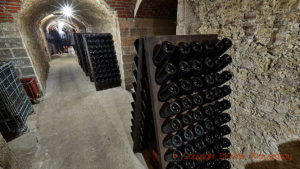 Join us on our Champagne wine tour and you will realise that not everything about Champagne is tradition and history. Actually, you will meet passionate producers that are very creative. They make magnificent champagnes and we will enjoy them during our tastings and during our all-through-champagne lunches. We will visit small, independent growers but also a few of the “houses” with impressive cellars, and some small houses, well-known for their top-quality champagnes. After spending some days here in Champagne, you will know the area and you will know a lot about what is going on here and understand the philosophy of many of the producers. It will be time well spent.
Join us on our Champagne wine tour and you will realise that not everything about Champagne is tradition and history. Actually, you will meet passionate producers that are very creative. They make magnificent champagnes and we will enjoy them during our tastings and during our all-through-champagne lunches. We will visit small, independent growers but also a few of the “houses” with impressive cellars, and some small houses, well-known for their top-quality champagnes. After spending some days here in Champagne, you will know the area and you will know a lot about what is going on here and understand the philosophy of many of the producers. It will be time well spent.
Join us in Champagne, September 16-20, 2020
Don’t be an egoist! Share with your friends and other wine enthusiasts! Forward the Brief to your friends! Suggest that they sign up for a free subscription !
© Copyright BKWine







